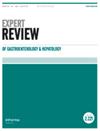处理胆汁酸腹泻:争议的各个方面。
IF 2.5
3区 医学
Q2 GASTROENTEROLOGY & HEPATOLOGY
Expert Review of Gastroenterology & Hepatology
Pub Date : 2024-09-12
DOI:10.1080/17474124.2024.2402353
引用次数: 0
摘要
简介胆汁酸腹泻是导致肠道症状的常见原因,但经常被忽视或误诊。治疗的许多方面仍存在争议。覆盖范围对于功能性腹泻或腹泻为主的肠易激综合征患者,应怀疑原发性、特发性病症。继发性原因包括回肠切除术、炎症和胆囊切除术后。全球的诊断检测方法不尽相同,许多国家都无法提供诊断检测,因此需要进一步完善检测策略。治疗方法通常是长期控制症状,而不是逆转致病因素(致病因素仍在界定中)。胆汁酸螯合剂仍是主要药物。这些药物的价格相对较低,目前已有关于可乐定的更高质量的数据。然而,最佳使用方法,包括使用时机和剂型,仍有待明确。GLP-1 受体激动剂利拉鲁肽(liraglutide)也很有效,但其作用机制以及这种效果是否与其他同类药物相同尚不清楚。这些药物较为昂贵,供应情况也不尽相同。FXR 激动剂也可能有效,但需要进一步验证。饮食因素在症状发展中的作用是患者关心的一个主要问题,需要进行更多的正式研究。专家观点在近期研究结果的基础上,胆汁酸腹泻需要进一步研究其病因、诊断和治疗,以指导现在和未来的患者护理。本文章由计算机程序翻译,如有差异,请以英文原文为准。
Managing bile acid diarrhea: aspects of contention.
INTRODUCTION
Bile acid diarrhea is a common cause of bowel symptoms and often goes unrecognized or misdiagnosed. Many aspects of management remain contentious.
AREAS COVERED
The primary, idiopathic condition should be suspected in people with functional diarrhea or diarrhea-predominant irritable bowel syndrome. Secondary causes include ileal resection, inflammation, and post-cholecystectomy. Diagnostic tests vary globally, being unavailable in many countries, and further refinement of testing strategy is needed. Management is usually long-term symptom control, rather than reversal of the causative factors, which are still being defined. Bile acid sequestrants remain the main drugs used. They are relatively inexpensive, and better-quality data is now available for colesevelam. However optimal use, including timing and formulation, needs clarification. The GLP-1 receptor agonist, liraglutide, is also effective, although mechanisms of action and whether this effect is common to other class members is unclear. They are more expensive, and availability varies. FXR agonists can also be effective but require further validation. The role of dietary factors in symptom development is a major patient concern, needing more formal studies.
EXPERT OPINION
To build on recent findings, bile acid diarrhea needs further investment into causes, diagnosis and therapy to guide present and future patient care.
求助全文
通过发布文献求助,成功后即可免费获取论文全文。
去求助
来源期刊

Expert Review of Gastroenterology & Hepatology
GASTROENTEROLOGY & HEPATOLOGY-
CiteScore
6.80
自引率
2.60%
发文量
86
审稿时长
6-12 weeks
期刊介绍:
The enormous health and economic burden of gastrointestinal disease worldwide warrants a sharp focus on the etiology, epidemiology, prevention, diagnosis, treatment and development of new therapies. By the end of the last century we had seen enormous advances, both in technologies to visualize disease and in curative therapies in areas such as gastric ulcer, with the advent first of the H2-antagonists and then the proton pump inhibitors - clear examples of how advances in medicine can massively benefit the patient. Nevertheless, specialists face ongoing challenges from a wide array of diseases of diverse etiology.
 求助内容:
求助内容: 应助结果提醒方式:
应助结果提醒方式:


